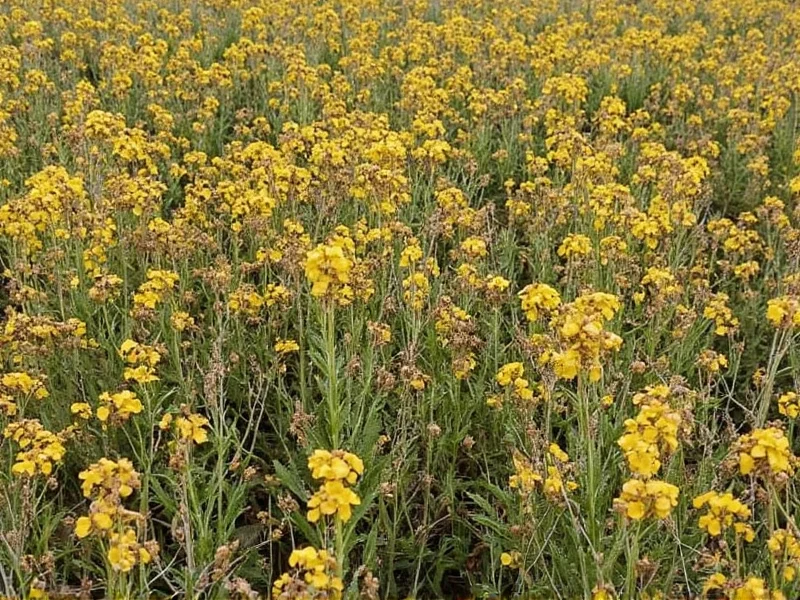That distinctive phrase you've encountered isn't just a whimsical typo—it's a deliberate culinary pun that has taken root across food media. The substitution of “thyme” for “time” represents more than clever wordplay; it embodies a growing movement connecting herb gardening, cooking traditions, and food storytelling. This linguistic twist has become particularly popular among food content creators seeking to establish an immediate connection with herb enthusiasts and home cooks.
The Botanical Background of Thyme
Before exploring why this phrase resonates so strongly in culinary circles, understanding Thymus vulgaris itself proves essential. This perennial herb belongs to the mint family (Lamiaceae) and boasts over 350 varieties worldwide. Native to Mediterranean regions, thyme thrives in sunny, well-drained conditions and has been valued since ancient times—Egyptians used it in embalming, while Greeks incorporated it into temple incense.
From a botanical perspective, thyme's tiny leaves contain thymol, the compound responsible for its distinctive aroma and antimicrobial properties. This explains why fresh thyme in Mediterranean cooking appears so frequently in dishes requiring both flavor complexity and natural preservation. The herb's resilience—surviving droughts that kill more delicate plants—has made it a symbol of courage throughout history, with medieval knights often receiving thyme sprigs as tokens of bravery.
Culinary Applications That Make Thyme Indispensable
Professional chefs and home cooks alike prize thyme for its versatility across cooking techniques. Unlike more delicate herbs, thyme withstands prolonged cooking, making it ideal for slow-cooked stews and braises. When added early in the cooking process, its woody stems infuse broths with earthy depth; as a finishing touch, delicate leaves provide aromatic brightness.
Consider these professional kitchen applications that demonstrate effective thyme usage in modern cuisine:
| Cooking Method | Thyme Application | Flavor Development Time |
|---|---|---|
| Roasting | Whole sprigs tucked under poultry skin | 45-60 minutes |
| Braising | Bundle with bay leaf and parsley (bouquet garni) | 2-3 hours |
| Sauces | Finely minced leaves added near completion | 5-10 minutes |
| Infusions | Steeped in cream or oil for 24 hours | 12-24 hours |
Growing Your Own Culinary Thyme
For those inspired to move beyond store-bought thyme versus fresh comparisons, cultivating your own offers superior flavor and cost savings. Thyme's drought tolerance makes it ideal for beginner gardeners, though specific growing conditions affect its essential oil concentration—the source of its flavor intensity.
Successful growing thyme in home gardens requires attention to these critical factors:
- Soil pH: 6.0-8.0 (slightly alkaline preferred)
- Sun exposure: Minimum 6 hours direct sunlight
- Watering: Deep but infrequent (mimicking Mediterranean climate)
- Harvesting: Morning collection after dew evaporates for peak oil concentration
Container gardening proves particularly effective for controlling moisture levels. Use terra cotta pots with drainage holes and a gritty soil mix containing perlite. During winter months in colder climates, move containers indoors near south-facing windows to maintain year-round harvests.
Distinguishing Thyme Varieties for Specific Culinary Uses
Not all thyme serves identical purposes in the kitchen. Understanding different types of thyme for cooking prevents disappointing results. The most common culinary variety, Thymus vulgaris (common thyme), offers the familiar earthy flavor, while specialized cultivars provide unique profiles:
- Lemon thyme: Contains citral compounds, ideal for fish dishes and fruit desserts
- Caraway thyme: Distinctive anise notes complement root vegetables
- Woolly thyme: Primarily ornamental with minimal culinary use
- Orange thyme: Citrus undertones enhance poultry and cream sauces
When substituting dried for fresh thyme, remember the concentration ratio: one teaspoon dried thyme equals approximately three teaspoons fresh. This knowledge proves crucial when following traditional recipes calling for fresh thyme while using pantry staples.
Preserving Thyme's Flavor Throughout the Year
Seasonal availability shouldn't limit your access to quality thyme. Proper preservation techniques maintain flavor compounds that degrade rapidly in store-bought dried versions. Freezing whole sprigs in olive oil preserves both flavor and convenience—simply drop a cube into soups or sauces. Alternatively, hanging small bundles upside-down in a dark, dry space creates dried thyme with superior taste compared to commercial products.
For immediate culinary impact, strip leaves from stems by running fingers downward against growth direction. This technique prevents stem fragments in dishes—a common frustration when learning how to use thyme properly in recipes. Remember that thyme's flavor intensifies over time, so add it early in cooking processes except when using as a fresh garnish.
Why “Once Upon a Thyme” Resonates in Food Culture
This linguistic twist has gained traction because it encapsulates multiple culinary values simultaneously. It suggests storytelling through food—each dish having its own narrative. The phrase implies tradition (once upon) meeting botanical specificity (thyme), creating instant recognition among food enthusiasts. Unlike generic food blog names, it signals both expertise and approachability—qualities increasingly valued in today's culinary content landscape.
When evaluating sites using this phrase, look for evidence of genuine herb knowledge rather than superficial wordplay. The most authoritative once upon a thyme recipe resources demonstrate deep understanding of herb cultivation, proper usage timing, and variety-specific applications—not just clever naming.











 浙公网安备
33010002000092号
浙公网安备
33010002000092号 浙B2-20120091-4
浙B2-20120091-4